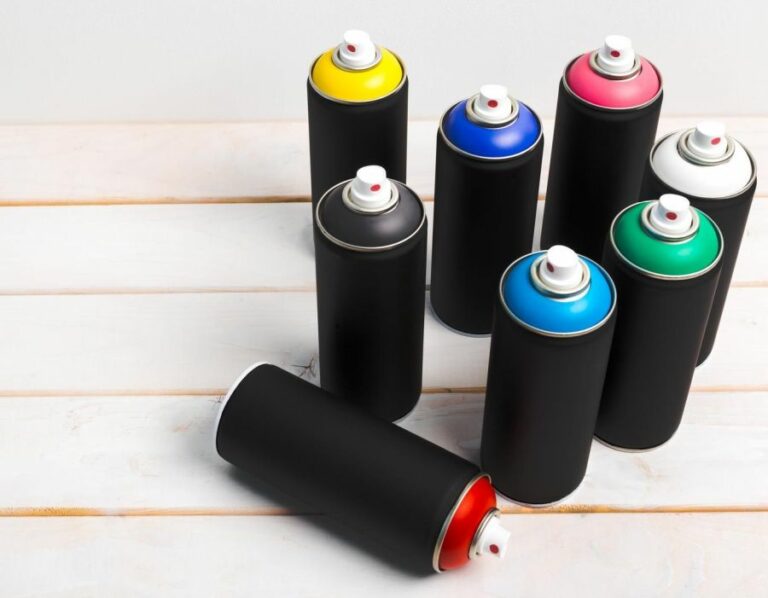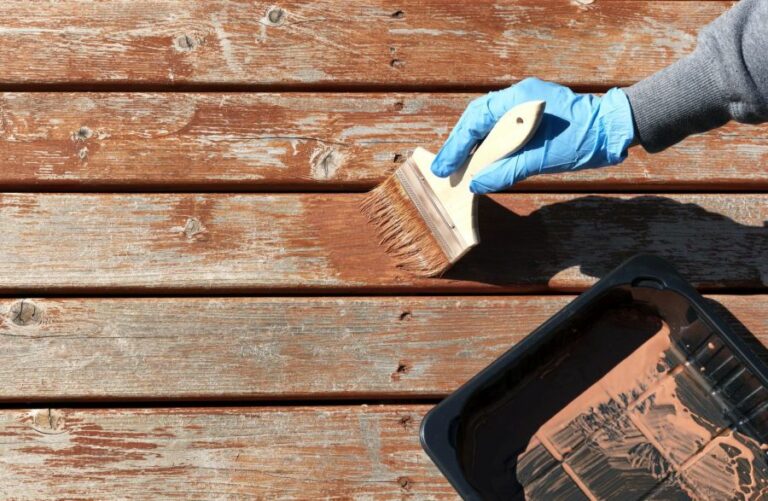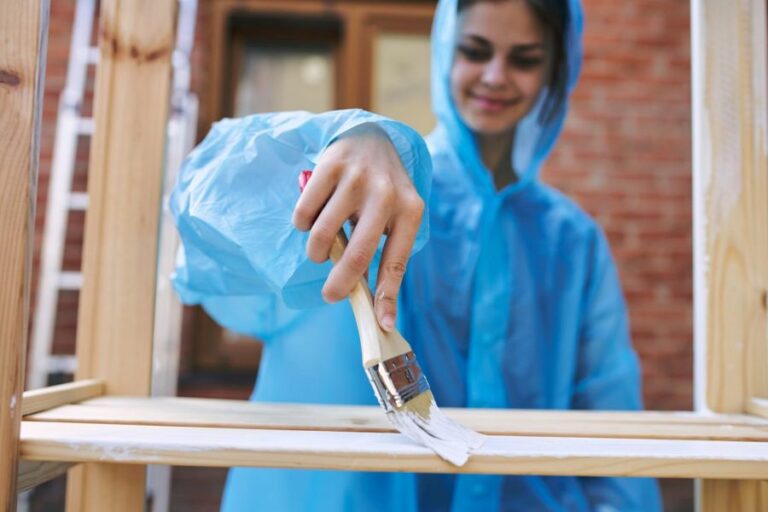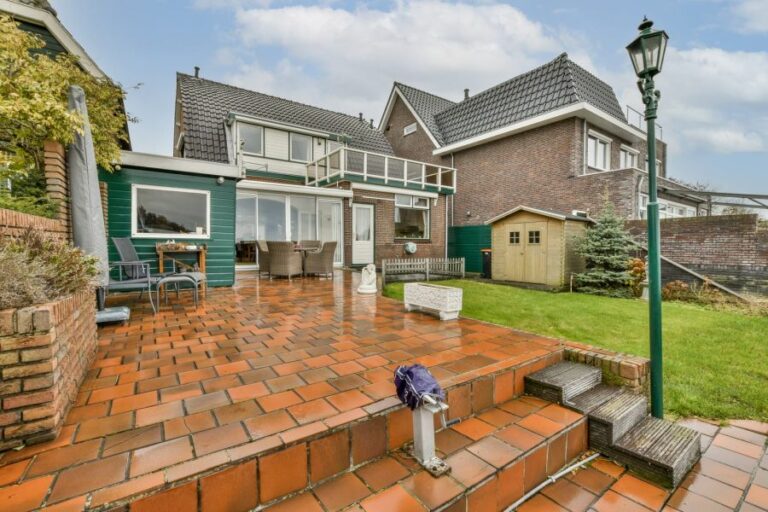Paint For Outdoor Patio, 25 Things You Should Know
If you’re looking to transform your outdoor patio into a lively and welcoming space, choosing the right paint is essential. Not to worry, we’ve got all the information you need to make the best decision! With our guidance, you’ll discover the ideal paint for your outdoor patio that will withstand the elements while keeping your space looking fresh and stunning.
Paint for outdoor patio:
Paint for outdoor patios should be chosen based on the material and climate, with common options including acrylic latex paint, concrete paint, and deck and patio paint. Preparation involves cleaning, repairing, and priming the surface, followed by applying paint in even strokes and allowing it to dry. Regular maintenance, such as cleaning and touch-ups, ensures longevity and appearance.

Looking to give your outdoor patio a fresh new look? Discover effective and long-lasting paint options specifically designed for outdoor patios! Read on to explore various colors and finishes and learn pro application tips that guarantee a stunning result. Don’t wait. Let’s dive in!
Contents
- 1 Premium Exterior Patio Paint
- 2 Which Kind of Paint is Most Suitable for an Outdoor Patio?
- 3 Is it a wise decision to apply paint on a patio?
- 4 Is it Possible to Apply Exterior Paint on a Concrete Patio?
- 5 Is Primer Necessary When Using Patio Paint?
Premium Exterior Patio Paint
Let’s discuss everything you need to know about paint for outdoor patio projects, including selection, preparation, application, and maintenance. Our aim is to help you achieve the best results possible when it comes to refreshing and protecting your patio surfaces. Let’s get started!
• Choosing the Right Type of Paint for Your Patio
There are several types of paint that can be used for outdoor patio surfaces. The most common options include:
– Acrylic Latex Paint
Acrylic latex paint is a durable and versatile option that can be used on a variety of surfaces, including concrete, wood, and masonry. It provides excellent coverage, dries quickly, and is resistant to moisture, mildew, and UV damage.
This type of paint is also environmentally friendly, as it has low VOC levels and can be easily cleaned up with water.
Recommended for: Patios with different materials or surfaces that require a versatile paint option.
– Concrete Paint
Specifically designed for concrete surfaces, concrete paint provides a durable and long-lasting finish that is resistant to moisture, wear, and tear. It also typically contains additives that help to fill in small cracks or imperfections in the concrete, making it ideal for older patios.
Recommended for: Older patios with surface imperfections or those that require additional durability.
– Deck and Patio Paint
Deck and patio paint is specifically formulated to provide a durable and slip-resistant finish for wooden and composite decks, as well as patios made from masonry or concrete. This type of paint is typically resistant to moisture, mildew, and UV damage.
Recommended for: Wooden decks or composite decks that require a slip-resistant surface.
When choosing paint for your patio, it is important to consider factors such as the material of your patio and the climate you live in, as these can impact the suitability of certain paint types.
• Preparing Your Patio for Painting
Before beginning the process of painting your patio, it’s crucial that you properly prepare the surface. Here are some key steps to take:
– Cleaning
Clean your patio thoroughly using a pressure washer or a broom and water mixed with mild detergent. Be sure to remove any dirt, debris, or residue, as these can negatively impact the adhesion and appearance of the paint.
– Repairing
Once the surface is clean, check for any cracks, chips, or other imperfections that need repairing. For minor repairs, use a patching compound to fill cracks and level off surfaces. For larger repairs, you may need to seek the help of a professional contractor.
– Priming
Priming is critical for providing a smooth and uniform surface for the paint to adhere to. Use a primer suited to your patio’s material, for example, a concrete primer for concrete surfaces. Some concrete paints include a built-in primer, so be sure to read the label carefully.
• Painting Your Patio
Once you have selected the right paint and prepared the surface, you’re ready to begin painting your outdoor patio. Follow these simple steps for a professional finish:
– Step 1: Plan Your Approach
Plan your approach by determining the best order in which to paint your patio. Start at one corner and work your way out, painting in sections to allow you to move freely without disrupting the wet paint.
– Step 2: Apply Your Paint
Using a roller or brush suited to your patio’s material, apply the paint in even, smooth strokes. Be sure to follow the manufacturer’s instructions with regard to drying times and the number of coats required.
– Step 3: Allow Paint to Dry
Once the paint has been applied, allow it to fully dry according to the manufacturer’s instructions. This may take anywhere between 24 and 72 hours, depending on the type of paint and the weather conditions.
• Maintaining Your Painted Patio
After the paint has dried, it’s important to properly maintain your patio to ensure its longevity and appearance. Here are some tips for maintaining a painted patio:
- Regularly clean your patio to remove dirt and debris.
- Touch up any areas that become worn or chipped over time.
- Consider applying a sealer or protective coating to your patio periodically to prolong the life of the paint and protect against weather damage.
By following the guidance provided in this article, you can ensure that your outdoor patio remains beautiful and protected for years to come. Happy painting!
Which Kind of Paint is Most Suitable for an Outdoor Patio?
• Introduction to Outdoor Patio Paints
When it comes to choosing the right type of paint for your outdoor patio, you want something that is durable, long-lasting, and visually appealing. The paint should be able to withstand the elements and provide protection for your patio surface.
• Types of Outdoor Patio Paints
– Acrylic Latex Paint
Acrylic latex paint is a popular choice for outdoor patios because it offers excellent durability, flexibility, and water resistance. It can be applied to various surfaces, including concrete, brick, and stone. This type of paint is easy to clean, and it dries quickly, making it an excellent option for DIY projects.
From a personal experience standpoint, it is highly recommended for those considering painting their outdoor patio with acrylic latex paint, as it can also withstand varying temperatures and weather conditions.
– Elastomeric Paint
Elastomeric paint is a high-performance paint designed to provide a flexible, durable, water-resistant coating. This paint is perfect for outdoor patio surfaces as it can easily fill and seal cracks and gaps while maintaining its flexibility to withstand extreme temperature fluctuations.
In addition, it has excellent adhesion properties and can last up to 10 years or more.
I highly recommend elastomeric paint for patios that are subjected to a lot of foot traffic or have surface issues like cracks or unevenness.
– Epoxy Paint
Epoxy paint is a two-component paint system that offers a highly durable, long-lasting, and chemical-resistant finish. This type of paint is primarily used for concrete and garage floor coatings. However, it can also be an excellent option for an outdoor patio, especially if looking for a non-slip surface.
From a personal standpoint, epoxy paint can be a bit more challenging to work with due to the mixing and application process. Nevertheless, if you’re looking for a highly durable and long-lasting surface on your outdoor patio, epoxy paint is an excellent choice.
– Concrete Stain
While not technically a paint, concrete stains can still provide a similar function by adding color and protection to the patio surface. These stains penetrate the concrete’s porous surface and create a long-lasting, fade-resistant color that enhances the natural texture of the surface. Concrete stains can be either water-based or acid-based, with the latter offering more vibrant and diverse color options.
If you want to maintain and showcase the natural texture of your concrete patio, a concrete stain may be the right choice for you.
• Factors to Consider When Choosing Outdoor Patio Paint
– Surface Material
The material of your outdoor patio will significantly impact the type of paint you should choose. Concrete, brick, and stone surfaces each have unique characteristics that may require specific paint products.
In general, acrylic latex and elastomeric paints are suitable for most surface materials, while epoxy paint is best for concrete surfaces.
– Durability and Longevity
When selecting paint for your outdoor patio, it is essential to consider the paint’s durability and longevity. The paint should be able to withstand fluctuating temperatures, varying weather conditions, and foot traffic.
Elastomeric paints and epoxy paints are known for their excellent durability and long-lasting properties.
– Color and Finish Options
The paint’s color and finish will significantly impact the overall aesthetic of your outdoor patio. When considering paint options, look for a product that offers various colors and finishes to suit your desired style. Note that the color may fade due to sun exposure, so factor this in when deciding.
– Ease of Application and Maintenance
Finally, consider the ease of application and maintenance when selecting your outdoor patio paint. Some paints, like acrylic latex, are easier to apply and clean up, making them ideal for do-it-yourself projects.
On the other hand, epoxy paint and elastomeric paint may require more advanced skills for a successful application.
• Conclusion
Painting your outdoor patio can give it a fresh new look and provide protection against the elements. Choosing the right paint for your project is essential, so make sure to consider the surface material, durability, color options, and ease of application when making your decision.
Acrylic latex paint, elastomeric paint, epoxy paint, and concrete stains all offer unique advantages and should be considered based on your specific needs, preferences, and patio surface.
Type of Paint | Pros | Cons |
|---|---|---|
Acrylic Latex Paint | Water-based, easy to clean, long-lasting, resistant to UV rays, mildew, and moisture | Not as durable as oil-based paint |
Oil-Based Paint | Very durable, resistant to wear and tear, longer drying time allows for better adhesion | Not environmentally friendly, difficult to clean up, could become brittle over time |
Concrete Stain | Penetrates the surface, provides a natural finish, UV-resistant, durable | Less variety of colors, requires more surface preparation, might need a sealer |
Epoxy Paint | Resistant to chemicals, grease, and stains, durable, long-lasting | Requires thorough surface preparation, could be slippery when wet, may yellow over time |
Is it a wise decision to apply paint on a patio?
A patio serves as an outdoor extension of your home, providing an enticing space for relaxation, entertainment, and enjoyment of the surrounding environment.
• Benefits of Painting a Patio
– Enhanced Aesthetic Appeal
One of the most significant advantages of painting a patio is the enhancement of its overall aesthetic appeal. A freshly painted patio can breathe new life into your outdoor space, making it more visually appealing and inviting.
Be it a bold color choice or matching the patio flooring with the overall decor theme, a touch of paint can work wonders in transforming the look of your patio.
– Durability and Protection
Painting the patio can provide a protective layer against harsh weather conditions, wear and tear, as well as potential stains and spills. This protective layer can prolong the life of your patio surface by sealing any existing cracks, preventing water damage, and guarding against UV rays.
The paint can also make it easier to clean and maintain your patio, as it can be wiped down or hosed off without worrying about affecting the patio’s material.
– Increased Property Value
A well-maintained and visually appealing patio can add value to your property. Painting your patio is a relatively inexpensive way to enhance its look, making it more appealing not only for yourself but also for potential buyers if you ever decide to sell your home.
• Factors to Consider Before Painting a Patio
– Type of Patio Surface
The first factor to consider is the type of surface your patio is made of. Common patio materials include concrete, wood, brick, and stone. Each of these materials requires different preparation techniques and specific types of paint to ensure a long-lasting and high-quality finish.
– Weather Conditions
The local climate and weather conditions should also be taken into account before painting your patio. Ideally, you should pick a time with no heavy rain or extreme temperature forecast, as these conditions can negatively affect the paint application process and the final outcome.
Remember that the paint may take some time to dry, so make sure to check the weather forecast for a few days before painting your patio.
– Existing Dcor and Landscape
When selecting the color, finish, or pattern for your patio paint, you should also consider the existing decor and landscape surrounding the area.
This will ensure that the new paint complements and enhances the overall look and feel of your outdoor space.
• Types of Paint and Techniques
– Concrete Paint
If your patio is made of concrete, you can use a specially formulated concrete paint or stain. These are designed to penetrate the concrete surface and create a durable coating, protecting it from the elements.
According to the U.S. Environmental Protection Agency, using low-VOC or water-based paints can be an eco-friendly choice while also avoiding strong odors and fumes.
– Wood Paint
For wooden patios, consider using a wood paint or stain that offers UV and water protection. This will help protect the wood from sun damage, water damage, and potential decay. Make sure to use a suitable primer before applying the paint to ensure proper adhesion.
– Brick and Stone Paint
For brick and stone patios, use a paint specifically designed for these materials, ensuring the paint can adhere properly to the textured surfaces. These paints often contain additives that help seal and protect the surface from weather elements and provide a durable, long-lasting finish.
– Painting Techniques
Consider using multiple painting techniques to achieve a unique and personalized look for your patio. Some options include:
- Stenciling or painting patterns on the surface
- Creating a faux tile effect using tape and paint or using pre-made stencils
- Applying a textured finish or adding color accents to highlight certain areas.
In conclusion, painting a patio can be an excellent idea to enhance its aesthetic appeal, durability, and even the overall property value. Before starting the project, take into account the type of patio material, weather conditions, and existing decor.
Additionally, consider the many paint types and techniques available to achieve a stunning and personalized patio space. With careful planning and execution, painting your patio can result in a beautiful, protected, and lasting outdoor living area for you to enjoy.
Is it Possible to Apply Exterior Paint on a Concrete Patio?
A concrete patio can be an excellent addition to any home, providing a durable and versatile space for outdoor activities and entertainment.
However, over time, the concrete can become worn and discolored, prompting homeowners to look for ways to spruce up the appearance. One popular method for improving the look of a concrete patio is to apply a coat of paint.
The question that arises is whether exterior paint can effectively be used on a concrete surface.
The short answer is yes, you can use exterior paint on a concrete patio, with a few important considerations in mind.
• Selecting the Right Paint
When it comes to painting a concrete patio, the type of paint you choose is crucial. Not all exterior paints are suitable for use on concrete surfaces, and using the wrong type can lead to unsatisfactory results and even damage to the concrete.
– Acrylic Latex Paint
Acrylic latex paint is a popular choice for painting concrete patios due to its excellent adherence to the surface, flexibility, and resistance to weathering. It also dries relatively quickly and is easy to clean up with soap and water.
Many homeowners and professionals recommend using acrylic latex paint specifically formulated for masonry or concrete surfaces, as these products contain additives that improve adhesion and durability.
– Epoxy Paint
Another option for painting a concrete patio is epoxy paint, which is known for its durability and excellent resistance to chipping, peeling, and fading.
Epoxy paint forms a strong bond with the concrete surface, making it less susceptible to damage from exposure to the elements, heavy foot traffic, and general wear and tear. However, epoxy paint can be more challenging to apply and may require additional preparation steps.
• Preparing the Surface
Proper surface preparation is essential for ensuring a successful paint job on a concrete patio. Failure to adequately prepare the surface can result in poor adhesion, an uneven finish, and a shorter lifespan for the paint. Before painting, consider the following steps:
– Cleaning
Clean the concrete patio thoroughly to remove any dirt, dust, or debris that could interfere with the paint’s ability to bond with the surface. A pressure washer can be an effective tool for deep cleaning, especially for textured or porous concrete surfaces.
Alternatively, use a stiff-bristled brush and a solution of water and mild detergent to scrub the surface clean.
– Repairing
Inspect the concrete surface for any cracks, holes, or other defects that should be repaired before painting. Use a concrete patching compound or caulk to fill any voids or cracks, ensuring a smooth and even surface for the paint to adhere to.
– Etching
Etching is the process of treating the concrete surface with an acid-based solution to improve its texture and ensure better paint adhesion. Etching is particularly important for smooth or polished concrete surfaces that may be too slick for the paint to bond effectively.
Follow the manufacturer’s instructions for applying and neutralizing the etching solution.
• Priming and Painting
Once the surface has been prepared, it’s time to apply a primer and paint the concrete patio. Using a primer specifically designed for concrete surfaces is vital, as it provides an even base for the paint, ensuring better adhesion and a longer-lasting finish.
– Applying Primer
Using a roller, brush, or sprayer, apply the primer to the entire surface of the concrete patio, taking care to achieve a consistent and even layer. Allow the primer to dry according to the manufacturer’s recommended time.
– Painting
Select your preferred paint (acrylic latex or epoxy) and begin painting the surface. Choose a high-quality paint roller or brush for a smooth and professional finish. Apply the paint in thin, even coats, allowing each coat to dry before adding another layer.
Depending on the paint’s opacity and the concrete’s original color, you may need two or more coats to achieve complete coverage.
• Conclusion
In conclusion, using exterior paint on a concrete patio is a viable option for improving its appearance and adding a level of protection against the elements.
Be sure to choose the appropriate type of paint (acrylic latex or epoxy), thoroughly prepare the surface, and apply the paint in even coats to achieve a long-lasting and visually appealing finish.
Question | Answer |
|---|---|
Can you use exterior paint on a concrete patio? | Yes, but it is essential to choose the correct type of paint specifically designed for use on concrete surfaces. It is also crucial to prepare the surface properly and follow the manufacturer’s instructions for the best results. |
Is Primer Necessary When Using Patio Paint?
• Why Primer Matters: A Brief Introduction
When it comes to painting your patio, the importance of using a primer should not be overlooked. A primer is a preparatory coating applied to a surface before painting.
Its primary purpose is to promote adhesion and smooth out the surface, ensuring a more professional-looking finish. In addition, primer can help enhance the durability and lifespan of the paint applied on top, making it an essential step in the painting process.
In this comprehensive guide, we will explore the various reasons why you should consider using a primer when painting your patio and offer some expert recommendations for achieving optimal results.
• The Benefits of Using Primer: What You Need to Know
– Improved Adhesion and Longevity
One of the key reasons to use a primer when painting your patio is the improved adhesion between the paint and the patio’s surface.
This is especially important for surfaces exposed to outdoor elements, as the improved adhesion ensures that the paint will not peel or crack due to temperature fluctuations, moisture, or UV rays.
Primer also helps in achieving uniform paint color and coverage, preventing any uneven or patchy appearance post-application. Ultimately, the use of primer will extend the lifespan of your paint job, reducing the need for frequent touch-ups or complete repainting.
– Provides a Smooth and Even Surface
Proper surface preparation is crucial to any successful painting project. A patio is often exposed to dirt, grime, and organic matter that can lead to staining and uneven surfaces.
Applying a primer creates a smoother and more even surface that allows for better coverage of the paint, ensuring professional-looking results.
Moreover, a primer may help fill minor cracks, holes, or imperfections in the surface, further improving the overall appearance of the painted patio.
– Blocks Stains and Reduces Paint Absorption
Applying a primer before painting prevents any existing stains or discoloration on the patio from bleeding through the paint, thus ensuring a cleaner and more pristine final appearance.
Additionally, primer can lessen paint absorption, reducing the amount of paint required for a project and ultimately saving you money on materials.
• Choosing the Right Primer for Your Patio
– Consider the Surface Material
Different patio surfaces may require different types of primer. For instance, concrete patios might necessitate the use of a specialized concrete primer or masonry primer that can bond effectively to the porous surface.
On the other hand, wooden patios could benefit from the use of a wood primer or a stain-blocking primer that can help prevent tannin bleed.
It is crucial to refer to the product label or consult with an expert when selecting a primer to ensure compatibility with your patio’s surface material.
– Factor in Environmental Conditions
Since the patio is an outdoor space, it’s important to choose a primer that can withstand the environmental conditions that the area is exposed to. Look for primers specifically designed for outdoor use and rated for resistance to temperature fluctuations, moisture, and UV rays.
– Opt for Low-VOC or No-VOC Primers
Volatile Organic Compounds (VOCs) are chemicals emitted by many primers, which can contribute to air pollution and negatively impact indoor air quality. To ensure a safer and more eco-friendly painting project, opt for low-VOC or no-VOC primers.
• Expert Tips for Applying Primer to Your Patio
- Always begin with proper surface preparation: thoroughly clean and degrease the patio, repair any cracks or holes, and allow the surface to dry before applying the primer.
- Ensure proper ventilation during the priming and painting processes to minimize any health risks associated with paint fumes.
- Apply the primer using a brush or roller, and follow the manufacturer’s instructions for optimal coverage and drying time.
- Keep an eye on the weather forecast to avoid painting during excessive humidity, high temperature, or rain, which might negatively affect the primer and paint’s performance.
• In Conclusion: The Verdict on Patio Primer
Incorporating the use of a primer in your patio painting project can yield numerous benefits, from improved adhesion and a more even surface to extended paint longevity and reduction in materials cost.
Choosing the right primer for your specific patio surface material and taking into account environmental conditions will ensure optimal results.
Remember that proper surface preparation is key, and always follow the manufacturer’s instructions and recommendations during the priming and painting processes. By adhering to these best practices, you can create a beautifully painted patio that not only looks great but also stands up to the test of time.
For more information on patio painting and primer, consider consulting reputable sources like the EPA or local university extension offices, which often provide expert guidance on home improvement topics.
Question | Answer |
|---|---|
Do you need a primer for patio paint? | It depends on the surface you are painting and the type of paint you are using. If the surface is porous or has never been painted before, using a primer can improve adhesion and provide a more uniform finish. However, if the surface is already painted and in good condition, you might not need a primer. Always consult the paint manufacturer’s recommendations for the best results. |







